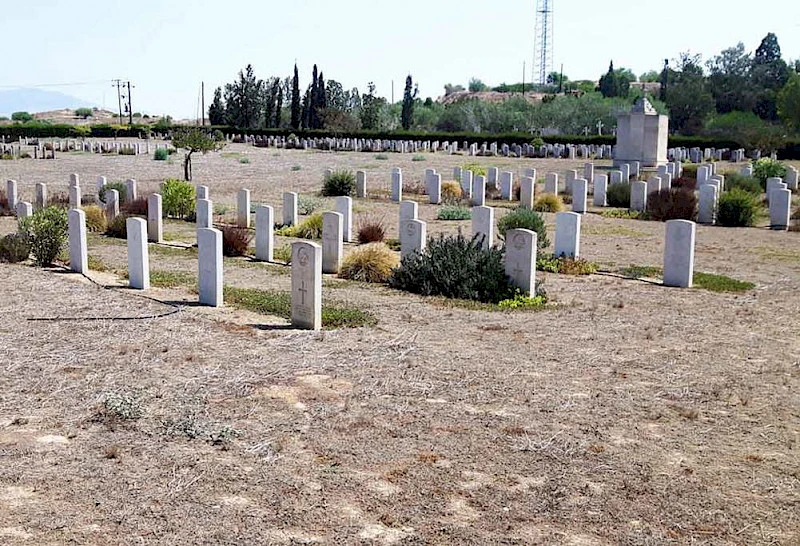How to Visit the British Military Memorial in Cyprus: A Tourist Guide
The British Military Memorial in Cyprus is an important historical monument honoring the British military personnel who served on the island. This guide from Cyprus-FAQ will help you plan your visit to the memorial and learn more about its historical significance.
The British Military Memorial in Cyprus is a place steeped in history and sorrow, a silent witness to the tragic events that unfolded on this Mediterranean island. It was erected in memory of those who gave their lives in service to Great Britain, from the colonial era to the present day.
This memorial is not just a monument; it is a symbol of remembrance and respect for the soldiers whose lives were tied to Cyprus. Here, under the Cyprus sun, rest those who fell in battle, became victims of conflicts, or died from illness while on duty.
In this article, we will delve into the history of the British Military Memorial in Cyprus, to honor the memory of those whose names are etched in its stones, and understand the significance of this place for both Cyprus and the United Kingdom.

Historical Background
The British military presence in Cyprus has a long history, and the Memorial preserves the memory of those who died while serving in Cyprus, including during the island’s struggle for independence and the subsequent years of British troop presence.
The British Military Memorial in Cyprus is not just a place of remembrance but a reflection of the island's complex and multifaceted history, closely intertwined with British presence. Here are some key moments in this history:
Colonial Period
Cyprus became a British colony in 1878, and since then, the island has served as an important strategic base for the British Empire. During this period, many British military personnel were stationed in Cyprus, and some of them found their final resting place here.
World Wars
Cyprus played an important role in both World Wars, with British military bases located on the island. The memorial honors those who died during these conflicts.
Period of Struggle for Independence
In the 1950s, Cyprus was embroiled in a struggle for independence from British rule, with both Greek-Cypriots and Turkish-Cypriots participating. This period was marked by conflicts and losses on both sides, and the memorial also honors British military personnel who died during this time.
Post-Independence
Even after Cyprus gained independence in 1960, British military bases remained on the island. The United Nations peacekeeping force also stayed on the island.
- Notable Fact: The memorial also contains the graves of Russian émigrés who died in hospitals in Cyprus during the 1920s.
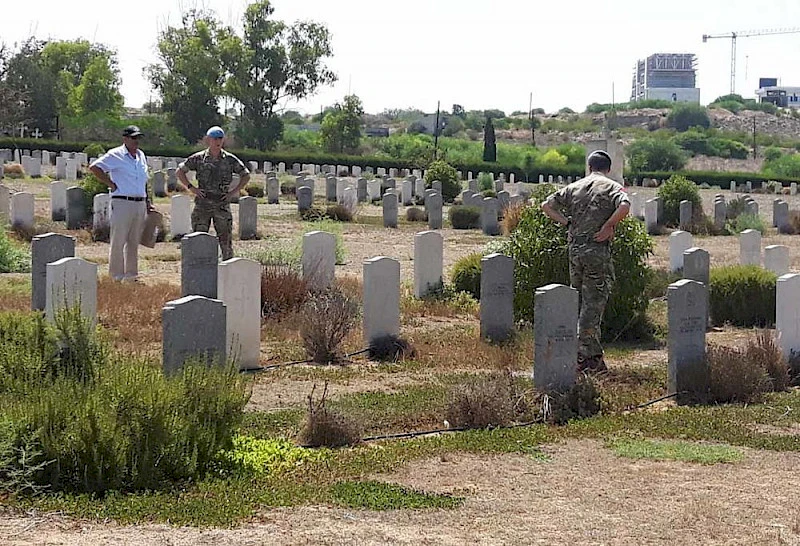
Location and How to Get There
The memorial is located in the Wayne's Keep area near Nicosia. It is important to note that it lies in the UN buffer zone, which imposes certain requirements for visiting.
Nicosia, the capital of Cyprus, is easily accessible from other parts of the island by bus, taxi, or rental car.
Within Nicosia, public transport or taxis can be used to reach the memorial.
- By car: Follow the signs to Nicosia (if coming from Limassol), then to Wayne’s Keep Cemetery
- By public transport: Take a bus to the nearest stop, then walk about 15 minutes
- By taxi: The most convenient, but expensive option. Here is a list of taxi apps in Cyprus
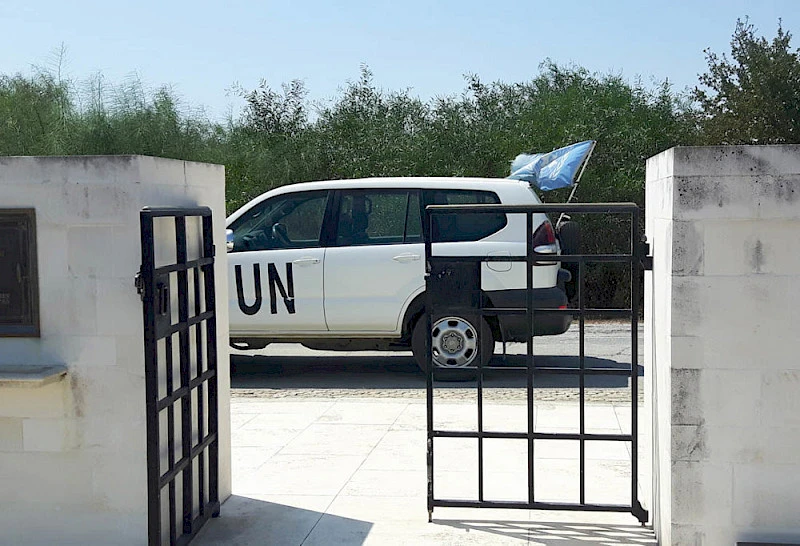
Visiting Rules
Due to the memorial’s location in the buffer zone, certain rules must be followed, as established by the military base authorities.
- Advance Permission: Permission to visit must be obtained from the relevant authorities.
- Documents: You must have your passport or other identification documents with you.
- Visiting Hours: Visits are strictly within designated hours. Since the memorial is located on an active military base, access may be restricted on certain days or during military exercises.
- Photography: You must adhere to the photography rules in the buffer zone. Photo and video recording may be restricted or prohibited in certain areas — you can only take pictures of the gravestones.
How to Obtain Permission
The British Military Memorial in Cyprus, located on the British military base of Akrotiri, is open to visitors. However, due to its location on an active military site, there are certain rules and requirements to consider when planning your visit.
To visit the memorial, you need to:
- Contact the Commonwealth War Graves Commission
- Fill out the visit request form
- Specify your preferred visit date
- Wait for confirmation
It is recommended to contact the administration of the British military bases in Cyprus in advance to clarify the rules and requirements for visiting the memorial, as well as to obtain necessary information on how to obtain permission to visit.
Contact details for obtaining permissions can be found on the official websites of the British military bases in Cyprus or through the British Embassy in Cyprus.
Contact the caretaker of the UN Wain's Keep via email at [email protected] to obtain the visit request form before starting any travel preparations. Requests must be approved no later than 28 days before the intended visit date. Please note that visits from any other direction, except for the one specified by the UN Wain's Keep Caretaker, are not possible.
Please provide in your email the full name (as per your passport), nationality, and passport number of each person wishing to visit the cemetery, as well as the intended visit date.
- For further information, contact [email protected].
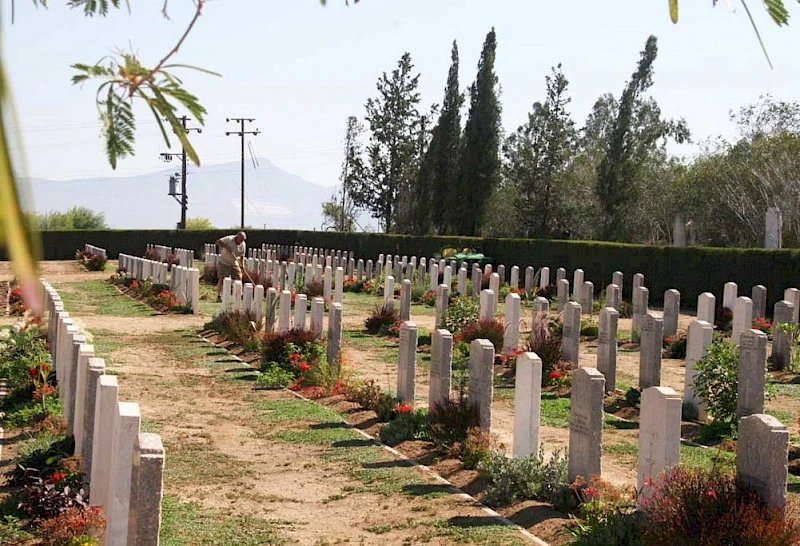
Best Time to Visit the Memorial
When planning your visit, consider the following factors:
- Climate: the best time is spring (March - May) and autumn (September - November)
- Opening hours: the memorial is open for visits during daylight hours
- Special dates: memorial ceremonies are held on Remembrance Day (November 11)
What You Can See at the Memorial
On the grounds of the memorial, you will find:
- Memorial plaques with the names of fallen soldiers
- Memorials to various British Army units
- Information boards with historical references
- Well-maintained grounds with typical Commonwealth military cemetery landscaping
Rules of Conduct
When visiting the memorial, please observe the following etiquette:
- Show respect for the memorial site
- Maintain silence
- Do not leave litter
- Follow the staff's instructions
Additional Recommendations
For a comfortable visit, it is recommended to:
- Bring water and a hat (especially in the summer)
- Wear comfortable shoes
- Bring necessary medications from the pharmacy
- Allow at least 1-2 hours for the visit
- Study the history of the place in advance to gain a deeper understanding of its significance
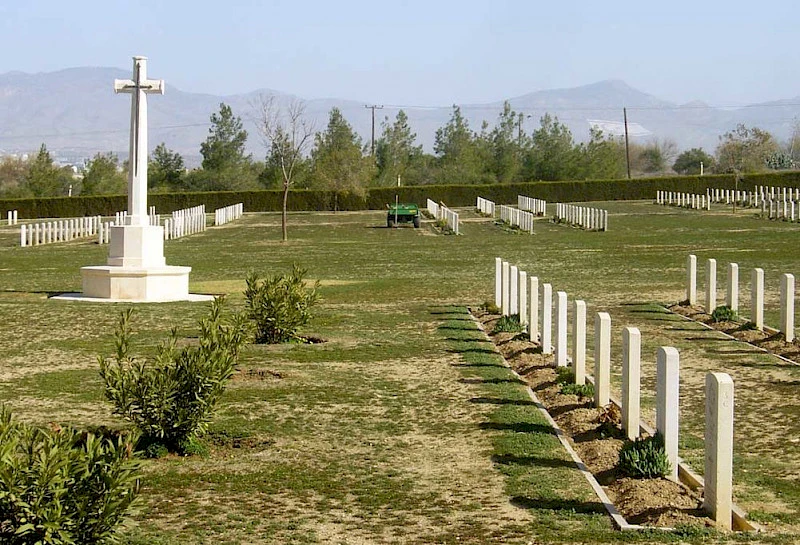
Interesting Places Nearby the Memorial
In the vicinity of the memorial, you can also visit the British Presence Museum in Cyprus and other Historical Sites in Nicosia, as well as monuments to the island's military history. The Old City of Nicosia is listed as a UNESCO World Heritage site.
The Cyprus Museum holds a rich collection of archaeological finds, telling the history of Cyprus from ancient times to the present day.
Here you can see artifacts from various periods of the island’s history, including the Neolithic, Bronze Age, and Roman eras.
In the Northern part of Nicosia, the Selimiye Mosque (formerly St. Sophia Cathedral) is particularly interesting. This historical monument, originally built as a Christian cathedral, was later transformed into a mosque. The building is an important symbol of the history of Nicosia and Cyprus.
If you find yourself in Northern Cyprus, take a trip to Kyrenia (this can be done by public transport) — another historically significant city on the island.
After visiting the hot and scorching capital, you can head to the sea to see the Famous Lovers' Bridge on the coastline, the Rock of Aphrodite, and other interesting places.
For further information and to arrange a visit:
- Contact the local office of the Commonwealth War Graves Commission
- Consult with Cyprus tourist information centers
- Stay updated on official web resources
Visiting the British Military Memorial in Cyprus is an opportunity to touch an important part of the island's history and pay tribute to those who served here. Proper planning of the visit and adherence to all formalities will make the visit both informative and memorable.
